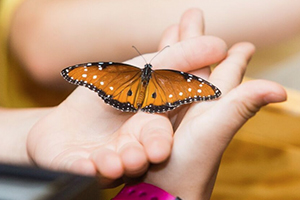Sonoran Lyresnake
(Trimorphodon lambda)
Order: Squamata
Family: Colubridae (colubrid snakes)
Spanish names: culebra
Distinguishing Features
Named for the V-shaped “lyre” on its head, this medium-sized snake reaches a length of nearly 4 feet (1.2 m). The broad head with narrow neck gives the lyre snake a triangular-shaped head. Dark brown saddles reside on a light brown to light gray back. The underside is creamy-white or yellow with scattered brown spots. The scales are smooth; the pupil is vertical.
Range
The northern part of the lyre snake’s range is in southeastern Nevada and southwestern Utah; the range continues south through western Mexico to Costa Rica.
Habitat
The lyre snake lives mainly in the lower rocky canyons and arroyos of hills and mountains from sea level to 7400 feet (2300 m). A rock dweller, it wedges itself in the many crevices and fissures that are abundant in rocky areas. This snake is an occasional resident of flat lands.
Life History
This mildly venomous, rear-fanged snake feeds primarily on lizards, but also eats birds and bats. Constriction may be used to subdue prey since the hemorrhagic venom is not very effective on birds and mammals. Primarily nocturnal, it is seldom active during the day. Easily alarmed, the lyre snake will raise its body off the ground, shake its tail, hiss, and strike and bite the intruder if not left alone. This behavior, along with the body pattern, triangular head, and elliptical pupils, sometimes causes the lyre snake to be mistaken for a rattlesnake. As many as 20 eggs are laid during the summer.










